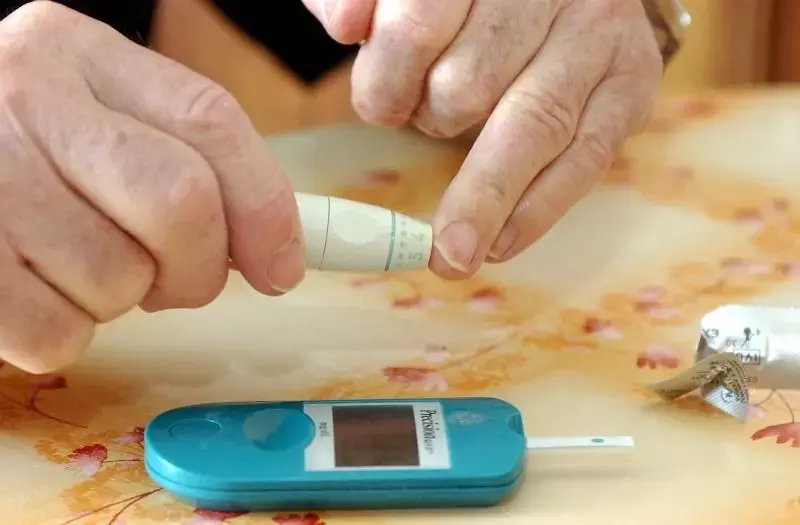- Home
- Medical news & Guidelines
- Anesthesiology
- Cardiology and CTVS
- Critical Care
- Dentistry
- Dermatology
- Diabetes and Endocrinology
- ENT
- Gastroenterology
- Medicine
- Nephrology
- Neurology
- Obstretics-Gynaecology
- Oncology
- Ophthalmology
- Orthopaedics
- Pediatrics-Neonatology
- Psychiatry
- Pulmonology
- Radiology
- Surgery
- Urology
- Laboratory Medicine
- Diet
- Nursing
- Paramedical
- Physiotherapy
- Health news
- Fact Check
- Bone Health Fact Check
- Brain Health Fact Check
- Cancer Related Fact Check
- Child Care Fact Check
- Dental and oral health fact check
- Diabetes and metabolic health fact check
- Diet and Nutrition Fact Check
- Eye and ENT Care Fact Check
- Fitness fact check
- Gut health fact check
- Heart health fact check
- Kidney health fact check
- Medical education fact check
- Men's health fact check
- Respiratory fact check
- Skin and hair care fact check
- Vaccine and Immunization fact check
- Women's health fact check
- AYUSH
- State News
- Andaman and Nicobar Islands
- Andhra Pradesh
- Arunachal Pradesh
- Assam
- Bihar
- Chandigarh
- Chattisgarh
- Dadra and Nagar Haveli
- Daman and Diu
- Delhi
- Goa
- Gujarat
- Haryana
- Himachal Pradesh
- Jammu & Kashmir
- Jharkhand
- Karnataka
- Kerala
- Ladakh
- Lakshadweep
- Madhya Pradesh
- Maharashtra
- Manipur
- Meghalaya
- Mizoram
- Nagaland
- Odisha
- Puducherry
- Punjab
- Rajasthan
- Sikkim
- Tamil Nadu
- Telangana
- Tripura
- Uttar Pradesh
- Uttrakhand
- West Bengal
- Medical Education
- Industry
Diabetic neuropathy tied with increased nonvertebral fracture risk, in long-standing T1DM

Diabetic neuropathy is tied with increased nonvertebral fracture risk, in long-standing Type-1 diabetes patients according to a recent study published in the American Society for Bone and Mineral Research.
Type 1 diabetes (T1DM) is associated with increased fracture risk, specifically at nonvertebral sites. The influence of glycemic control and microvascular disease on skeletal health in long-standing T1DM remains largely unknown.
They aimed to assess areal (aBMD) and volumetric bone mineral density (vBMD), bone microarchitecture, bone turnover, and estimated bone strength in patients with long-standing T1DM, defined as disease duration ≥25 years. We recruited 59 patients with T1DM (disease duration 37.7 ± 9.0 years; age 59.9 ± 9.9 years.; body mass index [BMI] 25.5 ± 3.7 kg/m2; 5-year median glycated hemoglobin [HbA1c] 7.1% [IQR 6.82–7.40]) and 77 non-diabetic controls. Dual-energy X-ray absorptiometry (DXA), high-resolution peripheral quantitative computed tomography (HRpQCT) at the ultra distal radius and tibia, and biochemical markers of bone turnover were assessed. Group comparisons were performed after adjustment for age, gender, and BMI.
The results are as follows:
Patients with T1DM had lower aBMD at the hip (p < 0.001), distal radius (p = 0.01), lumbar spine (p = 0.04), and femoral neck (p = 0.05) as compared to controls. Cross-linked C-telopeptide (CTX), a marker of bone resorption, was significantly lower in T1DM (p = 0.005). At the distal radius, there were no significant differences in vBMD and bone microarchitecture between both groups. In contrast, patients with T1DM had lower cortical thickness (estimate [95% confidence interval]: −0.14 [−0.24, −0.05], p < 0.01) and lower cortical vBMD (−28.66 [−54.38, −2.93], p = 0.03) at the ultra distal tibia. Bone strength and bone stiffness at the tibia, determined by homogenized finite element modelling, were significantly reduced in T1DM compared to controls. Both the altered cortical microarchitecture and decreased bone strength and stiffness were dependent on the presence of diabetic peripheral neuropathy. In addition to a reduced aBMD and decreased bone resorption, long-standing, well-controlled T1DM is associated with a cortical bone deficit at the ultradistal tibia with reduced bone strength and stiffness.
Thus, diabetic neuropathy was found to be a determinant of cortical bone structure and bone strength at the tibia, potentially contributing to the increased nonvertebral fracture risk.
Reference:
Bone Microarchitecture and Strength in Long-Standing Type 1 Diabetes by Lilian Sewing, et al. published in the American Society for Bone and Mineral Research.
https://asbmr.onlinelibrary.wiley.com/doi/10.1002/jbmr.4517
Keywords:
American Society for Bone and Mineral Research, Bone Microarchitecture, Strength, Long-Standing Type 1 Diabetes, diabetic neuropathy, Dual-energy X-ray absorptiometry, Type 1 diabetes, increased fracture risk, nonvertebral site, glycemic control, microvascular disease, skeletal health, Lilian Sewing, Laura Potasso, Sandra Baumann, Denis Schenk, Furkan Gazozcu, Kurt Lippuner, Marius Kraenzlin, Philippe Zysset, Christian Meier
Dr. Shravani Dali has completed her BDS from Pravara institute of medical sciences, loni. Following which she extensively worked in the healthcare sector for 2+ years. She has been actively involved in writing blogs in field of health and wellness. Currently she is pursuing her Masters of public health-health administration from Tata institute of social sciences. She can be contacted at editorial@medicaldialogues.in.
Dr Kamal Kant Kohli-MBBS, DTCD- a chest specialist with more than 30 years of practice and a flair for writing clinical articles, Dr Kamal Kant Kohli joined Medical Dialogues as a Chief Editor of Medical News. Besides writing articles, as an editor, he proofreads and verifies all the medical content published on Medical Dialogues including those coming from journals, studies,medical conferences,guidelines etc. Email: drkohli@medicaldialogues.in. Contact no. 011-43720751


